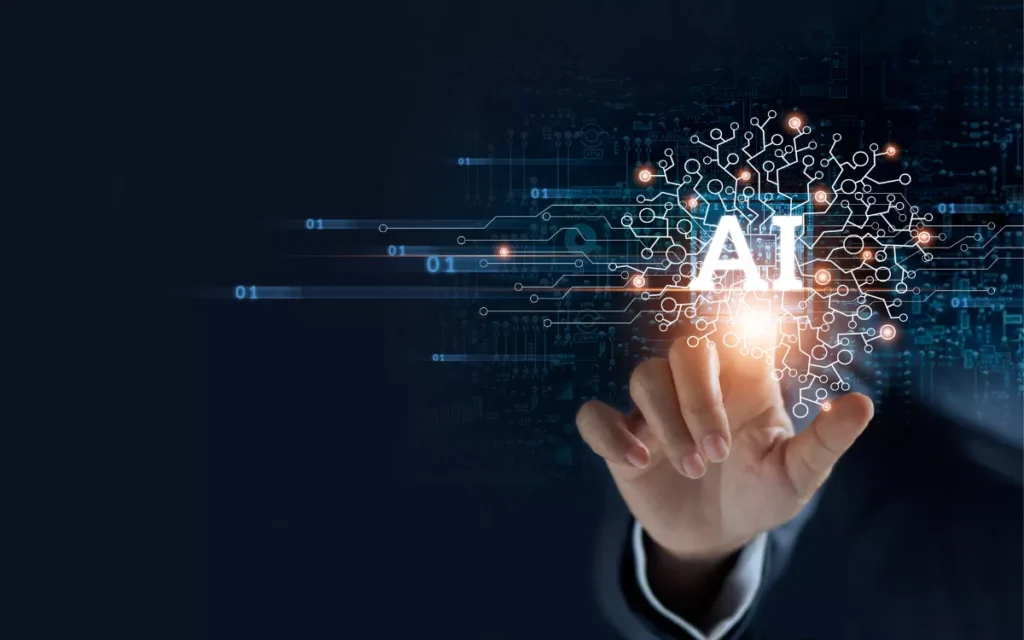The AI landscape is rapidly changing as new technologies emerge. Artificial Intelligence is now more advanced and plays a bigger role in various industries, from healthcare to finance. AI systems can learn, adapt, and perform tasks that once needed human intelligence. This evolution is leading to exciting possibilities and significant changes in how we live and work.

Here are 11 fascinating AI statistics and facts that you should know about:
- AI market to reach $267 billion by 2027.
- AI’s contribution to the economy: $15.7 trillion by 2030.
- AI’s role in job market: 85 million jobs eliminated, 97 million created by 2025.
- Over 3 billion voice assistants in use, expected to hit 8 billion by 2023.
- 25 countries developing autonomous vehicles.
- 38% of healthcare providers use AI for diagnosis.
- AI spend in retail projected at $20.05 billion by 2026.
- 23% of customer service companies use AI.
- Advances in Automated Machine Learning (AutoML).
- Growing use of AI in cybersecurity.
- Digital twins driving industrial metaverse development.
Global Market Value and Economic Contribution
The value of all the products and services related to AI will likely hit $267 billion by 2027. This means businesses and people will spend that much on things that involve AI.
Also, by 2030, AI might help the world earn $15.7 trillion more. This shows that AI is changing the way money flows in our world. It’s like AI is a powerful helper that can boost how much money countries make, just as a superhero boosts a team’s strength.
Job Market Impact
The job market is the place where people find work. Artificial Intelligence, or AI, is changing this market a lot. By 2025, AI will take away 85 million jobs. However, it will also make 97 million new ones.
So, while some types of jobs will disappear, there will be even more new kinds of jobs for people to do. This means a lot of change is coming in the kinds of jobs people will have.
Voice Assistants Popularity
Voice assistants are computer programs that help you understand your spoken words. In 2019, more than 3 billion devices had these helpers. Experts think this number will grow to 8 billion by 2023. This increase shows us that AI is becoming a more common part of technology that people use every day.
Autonomous Vehicles
Autonomous vehicles are cars that can drive themselves. They use special technology to move safely without a person steering them. Right now, 25 different countries are busy making these kinds of cars.
In the next five years, people believe the industry for these self-driving cars will be worth a lot—over $600 billion. This means that many people and companies think these cars are important and are willing to spend a lot of money on them. As the technology improves, we’ll likely see more autonomous vehicles on the roads.
Healthcare and Telecommunication
Healthcare and telecommunication are important areas where AI is making a difference. In healthcare, AI helps doctors by offering suggestions based on the patient’s data, with 38% of healthcare providers using this technology to assist in diagnosing diseases.
This means that almost two out of five doctors rely on AI to figure out what might be wrong with a patient. On the other side, telecommunication is about how we interact and communicate with each other, and it’s also feeling the impact of AI.
For instance, 52% of phone companies have introduced chatbots – these are computer programs designed to talk with people, answering questions and solving problems.
Chatbots can guide you when you need help with your phone services or complaints. AI’s role in these two sectors shows that it’s becoming a part of many different industries, not just technology companies.
Consumer Engagement with AI
When we talk about consumer engagement with AI, we’re looking at how often people like you and me interact with artificial intelligence, such as talking to an automated chat system when we need help online. Two-thirds of people today are okay with using AI if it can make talking to companies better.
That’s like out of every three people, two are happy to let AI help them when they need customer service. Moreover, 26% of people, which is about one out of every four, use AI every single day. This might be when they ask their phone a question or when a website recommends a product that they might like.
AI in Retail
“AI in Retail” means how much money businesses in the shopping world plan to spend on Artificial Intelligence (AI). They think they will spend $20.05 billion on AI by the year 2026.
- Since the year 2019, the amount of money spent on AI has been growing by 39% each year.
- Around 80 people out of every 100 who are in charge of stores believe that by 2027, their companies will use AI to work smarter.
This shows that AI is becoming very important for buying and selling things.
AI in Customer Service
Artificial Intelligence, or AI, is changing how we get help from companies. Now, about 23 out of 100 customer service companies are using AI. This means they let smart programs, like chatbots, talk to customers. Chatbots are like robots that can chat.
They can answer questions and solve problems quick and easy. IBM, a big technology company, says chatbots are great because they help save money. They can cut the cost of customer service by up to 30%. That’s because chatbots don’t get tired and can answer many people at the same time.
Automated Machine Learning (AutoML)
AutoML is a part of AI that makes it easier and cheaper to use. It does this by providing better tools for organizing data and fine-tuning complex AI networks on its own. Think of it like having a smart assistant that can figure out the best way to make AI work without needing a human to do all the detailed and tough calculations.
As a result, more people and companies can take advantage of AI, even if they don’t have a lot of money or expert knowledge in the field.
AI in Cybersecurity
In cybersecurity, AI and machines that can learn are like smart detectives. They look out for unusual activities that could signal hackers are trying to break into digital systems.
Because these smart systems learn from experience, they get better over time at noticing when something is not right. They quickly spot new ways that attackers try to cause harm and help to stop them. AI does this by studying patterns and understanding what normal behavior looks like, so it can react when something abnormal happens.
This is important because it helps protect our computers and online information from criminals.
Digital Twins and the Industrial Metaverse
Digital twins are like computer game versions of real-world things or systems. They copy what happens in the real world in a virtual space. This is useful for IT experts, especially when designing stuff for factories or big plants, as it helps them plan better without messing with the real thing.
In the past few years, these digital twins have gotten really good at imitating complex things, like how humans act or different events that could happen in a place. This is changing the way we make and test new ideas before we actually build them.
Sources:
- Dataprot.net – 55 Fascinating AI Statistics and Trends for 2023
- CompTIA – Artificial Intelligence Statistics and Facts for 2023 and Beyond
- TechTarget – 10 top AI and Machine Learning Trends for 2023


